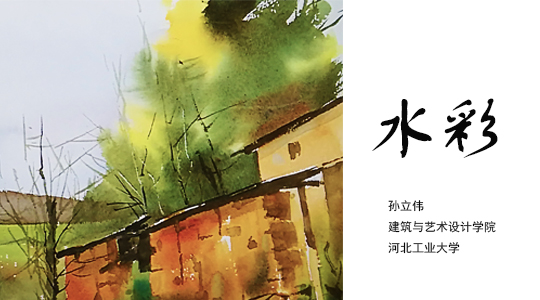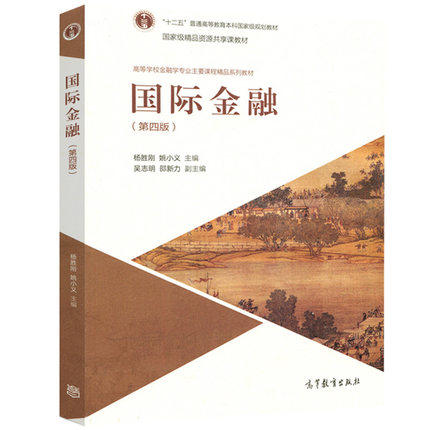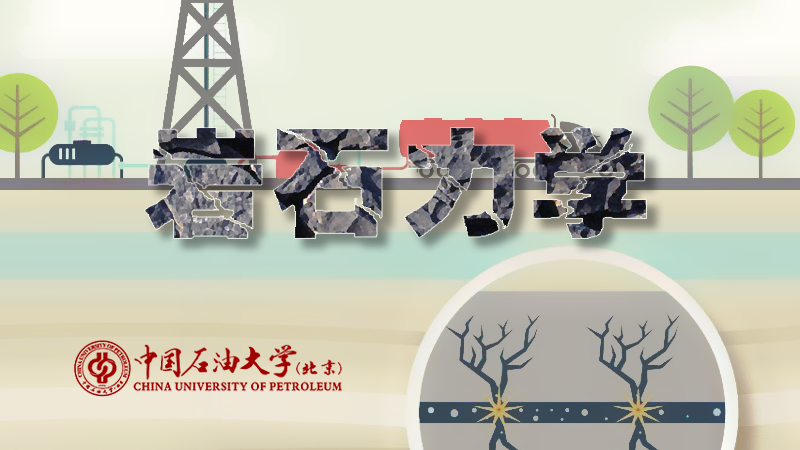
当前课程知识点:Diagnostics in Chinese Medicine > Week 4 Basic Theory of Chinese Medicine 4: The theory of etiologic factor > 4.2 Etiology of visceral impairment > 4.2 Etiology of visceral impairment
返回《Diagnostics in Chinese Medicine》慕课在线视频课程列表
返回《Diagnostics in Chinese Medicine》慕课在线视频列表
同学们好
我们来学习内伤致病因素
内伤致病因素 是指人的情志 或行为不循常度
直接伤及脏腑而发病的致病因素
我们主要学习七情 饮食 和劳逸三种内伤致病因素
首先我们来学习 第一种内伤致病因素 七情
七情 是指的七种情志
怒 喜 思 悲 恐 忧 惊
七种情志的变化
一定范围内的七种情志变化 不引起病变
则不属于病因
七情要成为病因的条件
必须是因为
突然 强烈 而持久的精神刺激
超过人的生理调节范围
使人体的气机紊乱
脏腑阴阳气血失调
才会导致疾病
由于七情是造成内伤病的主要致病因素之一
故称为内伤七情
七情和脏腑气血之间有什么样关系
七情活动 是以五脏六腑的精气为物质基础的
所以七情也是五脏六腑的精气的情志反映
比如
肝在志为怒
心在志为喜
脾在志为思
肺在志为忧
肾在志为恐
所以情志的变化和脏腑气血病变之间
它们是互相影响的
这种影响有什么样的病变特征呢
我们下面来看看七情的致病特点
首先
情志可以直接伤及内脏
情志首先会伤及本脏 比如
怒伤肝 喜伤心
思伤脾 悲忧伤肺 惊恐伤肾
另外
七情除了伤及本脏之外 还可以伤及多脏
尤其是以心 肝 脾为多见
比如
暴怒 除了伤肝之外 肝气横逆
会乘脾犯胃 所以会导致脾胃的病变
恐惧 会伤肾
肾精受损
不能够上济于心而导致失眠
思虑 除了伤脾 同样也会伤心
耗损心血
导致血不养神 而出现失眠的症状
七情不仅伤及本脏 也会伤及多脏
更重要是它会影响到脏腑的气机
导致气机紊乱 气血运行失常
它主要表现在
怒则气上 喜则气缓
悲则气消 恐则气下 惊则气乱
思则气结这六个方面
情志波动的异常 可以使病情加重
或者使病情迅速恶化
比如 高血压病患者
遇到了非常恼怒的事情 肝阳暴张
血压可以迅速升高 发生眩晕
甚至突然昏厥 或者昏仆不语
半身不遂 口眼歪斜等等病症
还有心脏病患人
情志波动 常可以使病情加重
或者迅速恶化
所以当人们生病的时候 一定要避免情志异常波动
这样有利于疾病的康复
下面我们来学习内伤病因中的
饮食损伤
饮食损伤主要有三种
饮食不节 饮食不洁 和饮食偏嗜
饮食损伤第一种 是饮食不节
节 是指的节制
饮食不节制 有三种表现
过饥 过饱 或者食无定时
过饥 是指
饥而不得食 渴而不得饮
它会导致气血化生之源不足
导致气血不足 脏腑失养
而过饱
是指暴饮暴食
或者是脾胃虚弱 但是勉强进食
过饱同样也会损伤脾胃
纳运失常而导致饮食积滞
小孩子如果饮食积滞日久会生成疳积
导致严重的营养不良
食无定时 是指的饮食不规律
这会导致的脾胃气滞
血瘀痰阻
饮食损伤第二种 就是饮食不洁
是指进食了不干净 或者有毒的食物
会导致腹痛 上吐下泻 痢疾 黄疸
或者肠道寄生虫 中毒等等
严重者可出现昏迷 甚至是死亡
饮食损伤第三种 就是饮食偏嗜
饮食偏嗜 主要有两种表现
一种是五味偏嗜
五味是指酸 苦 甘 辛 咸五种味道
酸入肝可养心
苦入心可养肺
甘入脾可养肝
辛入肺可养肾
咸入肾可养脾
所以五味合五脏
可以养五脏
但是 五味偏嗜
可以伤及所胜之脏
比如 多食酸 肝盛乘脾
会导致皮肉变厚 变皱
口唇干裂掀起
多食苦 心胜乘肺
会导致皮肤干燥 毫毛脱落
多食甘
脾胜乘肾 会导致面色黧黑 胸闷气喘
腰膝酸软 脱发等等
多食辛
肺胜乘肝 会导致爪甲干枯不荣 筋脉拘急不利
多食咸 肾胜乘心
会导致胸闷气短 脸上无华 血脉瘀滞等等
饮食偏嗜 还有另外一种 就是饮食的偏寒偏热
如果经常喜欢吃寒凉的食物 会导致
脾胃阳气虚弱
寒湿内生 而出现腹痛 腹泻的症状
如果经常吃辛热之品 会导致胃肠积热
而出现 口渴 口臭
腹满胀痛
便秘 痔疮等等这些实证
健康的饮食 应该是饮食有节 五味调和
如果 饮食不节
五味偏嗜 寒热偏嗜 出现了饮食损伤
就会损伤五脏 变生疾病
内伤致病因素 最后一个劳逸损伤
劳是指的过劳 过劳有三种表现
劳力过度 劳神过度和房劳过度
劳力过度 是指长时间过度劳力而积劳成疾
劳力过度 会耗气 导致气虚
容易出现气短乏力
懒言 自汗 易感冒等等症状
劳神过度 是指思虑太过 劳伤心脾
心脾不足 气血亏虚
容易出现心悸失眠 多梦健忘
以及纳呆 腹胀 便溏等症状
房劳过度 是指性生活不节制 房事过度
损伤肾精 导致肾虚
而出现 腰膝酸软
眩晕耳鸣 精神萎靡 性功能下降
或者遗精 早泄 阳痿等等
过度的劳累会损伤人体的正气
而过度的安逸 也会使人体出现病变
过逸有两种病变的机理
逸则气滞
逸则气虚
逸则气滞是指长时间活动不足
人体气机不畅
可导致
脾胃脏腑功能减退 出现食少 胸闷
腹胀 肌肉乏力 虚胖等等症状
逸则气虚 是指过度安逸或长期卧床
阳气失于振奋 导致正气不足
可见为心悸 气短 乏力
所以 过度的安逸也会容易引起病变
以上是我们学习的内伤致病因素
同学们
到现在 我们已经共同学习了
中医两个说理的工具 阴阳学说和五行学说
也学习了中医研究的对象 五脏六腑
还学习了五脏六腑的物质基础 气血津液
最后还跟同学们共同学习了 引起人生病的原因
外感六淫
内伤七情 饮食 劳逸损伤
我们学习的这些中医基础理论的内容
将对于我们学习望闻问切四种中医诊断方法
具有直接的指导意义
下一次课 我们将正式学习中医四诊的诊断方法
同学们 下次课再见
-Introductory remark
--QQ groups、WeChat public account
-Introduction
--【Discussion 1】Why do you want to take this course?
-Unit test for Introduction
-1.1 Yin-yang theory
-1.2 The theory of five elements
--1.2.1 The theory of five elements
--1.2.2 Application of the theory of five elements
-Frequently Asked Questions
-Unit test for week 1
-2.0 Outline
--【Discussion 2】How to understand the holistic view centered on the Zang Fu theory?
-2.1 Liver
--【Discussion 3】Why is repose more important than vigorous exercise in recuperation for patients with
-2.2 Heart
-2.3 Spleen
-2.4 Lung
--2.4 Lung
-2.5 Kidney
-2.6 Six fu organs
-Frequently Asked Questions
-Unit test for week 2
-3.1 Qi
--3.1 Qi
-3.2 Blood
-3.3 Body fluid
-3.4 The relationship of qi, blood and body fluid
--3.4 The relationship of qi, blood and body fluid
--【Discussion 4】A discussion about the theory of qi, blood and body fluid
-Frequently Asked Questions
-Unit test for week 3
-4.0 Outline
-4.1 Six exogenous factors
--4.1.2 Nature and pathogenicity of wind and cold
--4.1.3 Nature and pathogenicity of summer heat and damp
--4.1.4 Nature and pathogenicity of dryness and fire
-4.2 Etiology of visceral impairment
--4.2 Etiology of visceral impairment
-Frequently Asked Questions
-Unit test for week 4
-5.0 Outline of inquiry
--【Discussion 5】If you were a patient, how would you describe your condition to your doctor first?
-5.1 Inquiry of Chills and fever
--5.1.1 Chills and fever(Aversion to cold with fever)
--5.1.2 Chills and fever(Chills without fever)
--5.1.3 Chills and fever(Fever without chills)
--5.1.4 Chills and fever(Alternative chills and fever)
--【Discussion 6】How to understand "if you have clinical manifestations of cold, that is exterior syndr
-5.2 Inquiry of perspiration
-Frequently Asked Questions
-Unit test for week 5
-5.3 Inquiring of pain
--【Discussion 7】How to understand "stagnation leading to pain and innourish leading to pain"?
-5.4 Inquiring of head, body, thorax and abdomen
--5.4 Inquiring of head, body, thorax and abdomen
-5.5 Inquiring of ears and eyes
--5.5 Inquiring of ears and eyes
-5.6 Inquiring of sleep
-5.7 Inquiring of food and drink, appetite and taste
--5.7 Inquiring of food and drink, appetite and taste
-5.8 Inquiring of defecation and urination
--5.8.1 Inquiring of defecation
--5.8.2 Inquiring of urination
-5.9 Inquiring of infantile and women's disease
--5.9 Inquiring of infantile and women's disease
-Unit test for week 6
-6.0 Outline of Observation
--【Discussion 8】Please use the whole body inspection (including the expression, complexion and figure)
-6.1.1 Observation of vitality
--6.1.1 Observation of vitality
-6.1.2 Observation of the color
--6.1.2.1 The content, principles of inspection of the color
--6.1.2.2 Indication of diseases by five colors
--【Discussion 9】How do you understand the normal complexion of a normal people?
-6.1.3 Observation of the appearance
--6.1.3 Observation of the appearance
-6.1.4 Observation of figure and posture
--6.1.4 Observation of figure and posture
-Unit test for week 7
-6.2.1 Observation of head and face
--6.2.1 Observation of head and face
-6.2.2 Observation of five sensory organs
--6.2.2.1Observation of five sensory organs(observation of eyes,ears,nose)
--6.2.2.2Observation of five sensory organs(observation of lips,teeth and gums,throat)
-6.2.3 Observation of body
-6.2.4 Observation of limbs
-6.2.5 Observation of two lower orifices
--6.2.5 Observation of two lower orifices
-6.2.6 Observation of skin
-6.3 Observation of excreta
-6.4 Observation of infantile fingerprints
--6.4 Observation of infantile fingerprints
-Frequently Asked Questions
-Unit test for week 8
-7.1 Outline of tongue inspection
--7.1.1 The morphology and structure of the tongue
--7.1.2 The principle of tongue examination
--7.1.3 The method and precaution of tongue examination
--7.1.4 The content of tongue examination, normal tongue
-7.2 Inspection of tongue structure
--7.2.1 Observe the color of tongue
--7.2.2 Observe the shape of tongue
--7.2.3 Observe the states of tongue
--7.2.4 Observation of sublingual vein
-7.3 Observation of tongue coating
--7.3.1 Observation of coating texture
--7.3.2 Observe the color of coating
-7.4 Clinical significance of tongue diagnosis
--7.4 Clinical significance of tongue diagnosis
--【Discussion 10】Why to observe the tongue can be used to diagnose disease?
-Unit test for week 9
-8.1 The principle of pulse examination
--8.1 The principle of pulse examination
-8.2 The regions and methods of pulse examination
--8.2 The regions and methods of pulse examination
-8.3 The elements of pulse examination and the normal pulse
--8.3 The elements of pulse examination and the normal pulse
-8.4 Characteristics and significance of pulse
--8.4.1 Superficial pulse, deep pulse, slow pulse, rapid pulse
--8.4.2 Surging pulse, thin pulse, long pulse, short pulse
--8.4.3 Feeble pulse, forceful pulse, slippery pulse, uneven
--8.4.4 Taut pulse, tense pulse,soggy pulse, moderate pulse
--8.4.5 Knotted, slow-regular-intermittent, irregularly abrupt
-8.5 Similar pulse, concurrent pulse, pulse indicating deterioration of visceral qi۞
--8.5 Similar pulse, concurrent pulse, pulse indicating deterioration of visceral qi۞
--【Discussion 11】Why is complex pulse more common than single-factor pulse?
-8.6 Women’s pulse, children’s pulse
--8.6 Women’s pulse, children’s pulse
-8.7 The clinical significance of pulse diagnosis
--8.7 The clinical significance of pulse diagnosis
-Unit test for week 10
-9.1 Listening
-9.2.1 Abnormal sound
-9.2.2 Abnormal language
-9.2.3 Respiratory abnormality
--9.2.3 Respiratory abnormality
-9.2.4 Cough
--【Discussion 12】How to observe the patient's cough sound and sputum changes to determine whether the
-9.2.5 Abnormal sounds of the stomach and intestines
--9.2.5 Abnormal sounds of the stomach and intestines
-9.3 Smelling
--【Discussion 13】How to diagnose by smelling?
-Unit test for week 11
-10.1 The method, meaning and precautions of palpation
--10.1 The method, meaning and precautions of palpation
-10.2 Contents of palpation
--10.2.1 Palpating chest and hypochondrium
--10.2.2 Palpating stomach and abdomen
--10.2.4 Palpating hands and feet, palpating acupoints
--【Discussion 14】How to determine whether external or internal injuries?
-Unit test for week 12
-Conclusion
-Final Exam
--Final Exam



